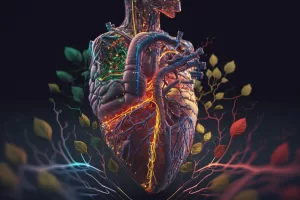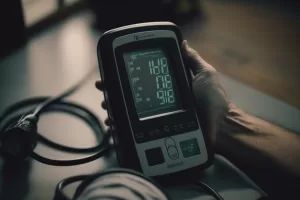Arterial hypertension is often confused with high blood pressure. But, in fact, it’s just another name for pulmonary hypertension – a rare health condition diagnosed in hundreds of Americans every year.
Unfortunately, this disorderis incurable.This means the disease never stops progressing. Still, there are some effective methods to slow down its development and improve the quality of life of people who have to live with this chronic lung disease. The duration of the patient’s life strongly depends on the efficacy of the treatment they receive.
A Detailed Look at PAH
The characteristic feature of this disorder is high blood pressure in the lungs. This happens due to the stiffening of the blood vessels, the reduction of their lumen, and blockages that prevent healthy blood flow. The obstacles in the arteriescause the heart to work with an overload so that it can pump sufficient amounts of blood. The organ wears out faster than it should, eventually leading to heart failure.
The classification of pulmonary hypertension subdivides it into five groups:
- Pulmonary arterial hypertension;
- Pulmonary hypertension due to left-sided heart disease;
- Pulmonary hypertension due to lung disease;
- Chronic thromboembolic pulmonary hypertension;
- Pulmonary hypertension provoked by other health issues.
Some groups of pulmonary hypertension can be cured, while others are lifelong conditions.
What Are the Causes of the Disease?
The reasons a person may develop this condition vary. They can be inborn or acquired. The most common of them are:
- congenital heart disease;
- idiopathic, aka unknown, cause;
- hereditary factors;
- chronic obstructive pulmonary disease;
- mitral or aortic valve disorder;
- connective tissue disease;
- blood clots in the lungs;
- renal disorders;
- drug abuse, and others.
A healthy person has four heart chambers: the upper ones (atria) and the lower ones (ventricles). The right ventricle is responsible for blood flowing from the heart via a pulmonary artery to the lungs. There it is supposed to release carbon dioxide and pick up oxygen to return to the left side of the heart.
But in people with arterial hypertension, this process is violated. The circulation of blood in the lungs requires more effort due to the damaged blood vessels, a hole between the two ventricles, or other factors contributing to the development of pulmonary hypertension.
How Should I Know I Have Pulmonary Hypertension?
Even if your disease is provoked by inborn abnormalities in your heart or lungs, you may have had no symptoms of pulmonary hypertension for long years. Unlike many health conditions, this one develops slowly and often stays unnoticed by a person until producing significant discomfort. The progress of the disorder is characterized by an increased number and severity of the symptoms, which may include:
- chest pain or the feeling of pressure;
- dyspnea, especially after physical activity (later in the disease, a person may have trouble breathing even staying physically inactive);
- the blueish color of the lips and skin due to oxygen shortage;
- dizziness and syncope;
- getting tired fast;
- swelling of the legs, ankles, hands, and abdomen (in the later stages of the disease).
Incurable types of pulmonary hypertension will eventually lead to a person’s death.
Factors Playing a Role in Arterial Hypertension
The factors that play a role in your chances of developingpulmonary hypertension are numerous. They include but are not limited to
- your age (it is more common in people older than 30);
- your family medical history;
- your predisposition to developing blood clots;
- inborn abnormalities of the heart;
- excessive body mass;
- exposure to certain chemicals, like asbestos;
- illegal drug use;
- treatment with SSRIs, antidepressants, or anxiolytics.
The Dangers of Arterial Hypertension
Aside from difficulty breathing and other bothersome symptoms of the disease, it can also cause a range of life-threatening complications, such as:
- violations of the heart rhythm;
- high risk of blood clotting;
- the enlargement of the right side of the heart, which lead to heart failure;
- lung bleeding.
If a woman suffering from pulmonary hypertension gets pregnant, there’s a high risk of losing a baby due to insufficient oxygen levels in the blood.
Treatment of Arterial Hypertension
When receiving quality treatment, one can slow down the progress of the disease and delay the moment severe symptoms arise. The medicine that can effectively work for people with pulmonary hypertension are:
- Calcium channel blockers can help widen the blood vessels (if taken in high doses).
- Endothelin receptor antagonists work by reversing the effects of the vasoconstrictor substance found in the blood vessel walls.
- Phosphodiesterase type 5 inhibitors tend to help by enhancing the flow of blood through the lungs.
- Vasodilators for relaxing and unblocking the circulation of blood in the lungs.
- Guanylate cyclase stimulators allow the relaxation of the arteries in the lungs by enhancing nitric oxide levels.
If medicines don’t help anymore, and the disease progresses fast, the only way to stop it and save your life is to undergo lung transplant surgery.



